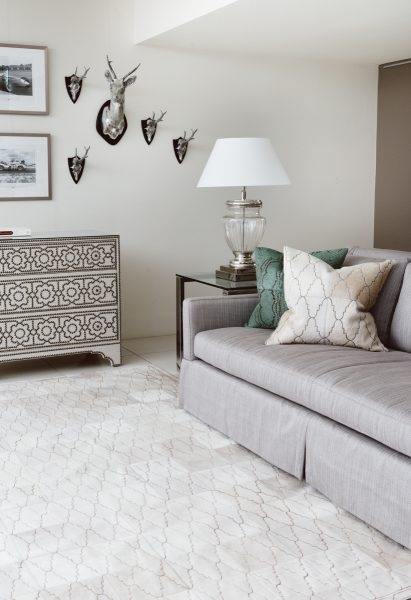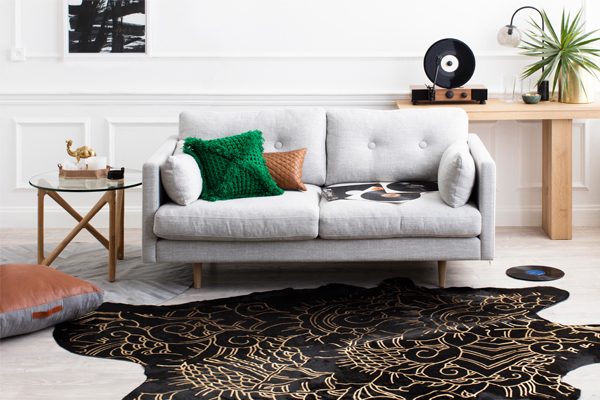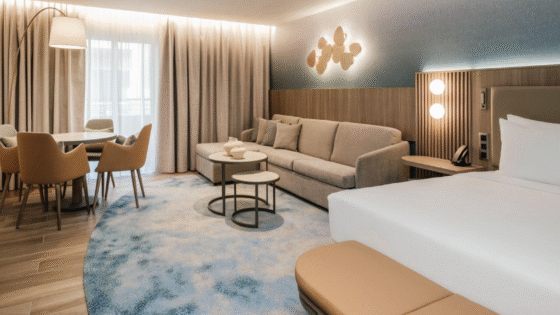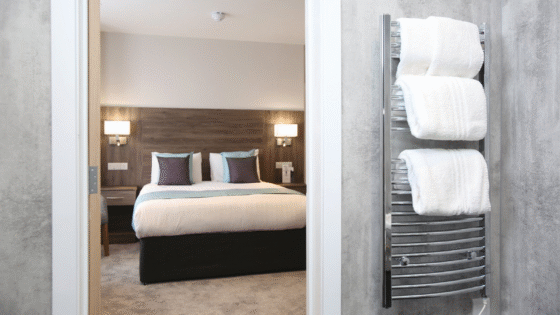Caroline Modig of Art Hide shares her thoughts on the role flooring and carpets play in the first impressions of guests…
—–
The main aim of all hospitality establishments is to form lasting impressions and ensure a trail of happy guests, since there’s no possibility of success without satisfied customers. Making guests happy, as we all know, is a difficult task indeed.
When they stay at a hotel, people expect everything to be perfect – inside and out. They will notice even the smallest detail, and most of them tend to be extremely picky. Interior design plays a huge role in the impression they take away, so you need to get everything just right. Start with what they notice first, which is the flooring and carpets.
 The Importance of Flooring and Carpeting in Hotels
The Importance of Flooring and Carpeting in Hotels
Not only does the right flooring and carpeting attract people’s attention, it can also help make them feel more at ease. Beautiful floors and comfortable carpeting can improve guest satisfaction, which in turn affects your class and star ratings, review scores and reputation. This ties in to room rates and ROI, impacting your profitability.
While there’s a wide range of flooring options available, some of the most popular options for hotels include:
• Hardwood
• Granite
• Marble
• Carpet
• Vinyl
• Laminate
• Ceramic and Porcelain Tile
• Decorative Concrete
Many of these materials are often accentuated with area rugs, which can be used to separate and define a space by adding visual and textural contrast. Patterned rugs are often used in high-traffic areas, while cowhide rugs can add warmth and sophistication to lounges, guests’ rooms and lobbies.
What to Consider while Picking Materials
Here are some factors to consider while choosing flooring and carpets for hotels:
• Aesthetics – Just like the other four walls in any area, the floor or “fifth wall” needs to please the eye as well. Floors should look luxurious, and complement the rest of the décor and design elements within each space.
• Comfort – People want to be pampered in a hotel, with the most restful beds and cozy furnishings. Soft hide rugs or plush carpets can help them feel even more comfortable, and add a touch of warmth to any space.
• Safety – Floors and carpets should not be slippery if they are exposed to water, dust, etc. Make sure to take the viscosity and slipperiness of each material into account, especially in bathrooms and near exterior spaces.
• Acoustics – Carpeting plays a key role in reducing noise within an interior space, and can help to soften sounds within a room as well as from adjoining rooms. This creates a more peaceful and relaxed atmosphere for guests.
• Durability – Hotel floors see a lot of traffic, and they need to be created with durable materials that will last. Remember, it’s not just foot traffic from guests and staff you need to think about, but also trolley wheels and other heavy items.
• Maintenance – Spills, stains and dirt are bound to send guests packing, so easy-to-clean flooring and carpeting is best. Certain designs also hide stains, while materials such as animal hide or leather are very easy to clean.
• Branding – Flooring and carpeting can also emphasize the concept and brand of your establishment. For instance, animal hides and rugs paired with wooden or marble flooring add a distinctive touch to luxury hotel interiors.
• Cost – The flooring you choose should fit your design and installation budget, but trying to cut costs with cheaper options could do more harm than good. If you want your flooring and carpeting to last, invest in quality materials.
Choose materials that add value to your interiors, boosting both visual appeal and comfort. Carpeting and rugs are a great way to enhance rooms and leisure areas, but they’re equally perfect for cheering up hallways, receptions, foyers and entrances. For a sense of luxury, try cowhide rugs or other natural materials.
Your hotel needs to look beautiful, luxurious and inviting right from the moment a guest steps in, so give the floors some attention too!
Caroline Modig works at Art Hide and oversees their marketing and promotional efforts. Her passion for interior design and the knowledge she gained over the years allows her to find time from her busy schedule to write informative blogs about interior trends, popular styling tips and everything related. When she isn’t working or writing, you can find her relaxing to some contemporary jazz while solving puzzles.






